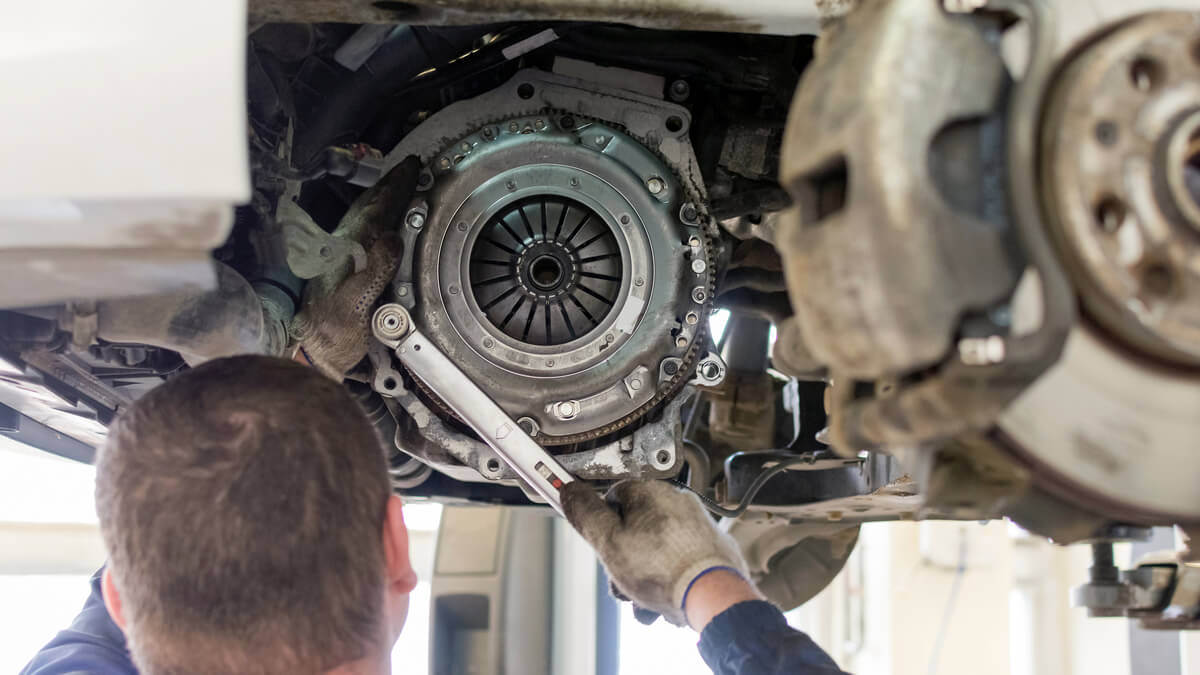Your car’s clutch assembly is one of those components that often goes unnoticed—until it starts to fail. For manual transmission vehicles, the clutch is the unsung hero that allows you to shift gears smoothly and maintain control over your vehicle. But like all mechanical parts, it doesn’t last forever. So, how do you know when it’s time to replace your clutch assembly? Let’s dive into the signs, causes, and timing for a clutch replacement.
What Does the Clutch Assembly Do?
Before we talk about when to replace it, let’s quickly cover what the clutch assembly does. The clutch is the link between the engine and the transmission. When you press the clutch pedal, it disengages the engine from the transmission, allowing you to change gears. When you release the pedal, the clutch re-engages, transferring power from the engine to the wheels.
The clutch assembly consists of several parts, including the clutch disc, pressure plate, flywheel, and release bearing. Over time, these components wear down due to friction and heat, leading to the need for replacement.
Signs It’s Time to Change Your Clutch Assembly
- Difficulty Shifting Gears
If you’re struggling to shift gears or hear grinding noises when you try, it could be a sign that your clutch is worn out. A healthy clutch should allow for smooth, effortless gear changes. - Slipping Clutch
Does your engine rev up without a corresponding increase in speed? This is called clutch slippage, and it happens when the clutch disc can’t grip the flywheel properly. Slipping is a clear indicator that your clutch is on its last legs. - Burning Smell
A burning smell, often described as similar to burning rubber, can indicate that your clutch is overheating. This usually happens when the clutch is slipping excessively or being ridden (held partially engaged) too often. - Spongy or Stiff Clutch Pedal
If your clutch pedal feels unusually soft or hard to press, it could be a sign of a problem with the clutch hydraulic system or the clutch assembly itself. - Vibrations or Jerking
When you release the clutch pedal, does the car jerk or vibrate? This could mean the clutch disc is worn unevenly or the pressure plate is failing. - High Mileage
Even if you’re not experiencing obvious symptoms, a clutch assembly typically lasts between 50,000 to 100,000 miles, depending on driving habits. If you’re approaching or exceeding this range, it’s worth having your clutch inspected.
What Causes Clutch Wear?
Understanding what causes clutch wear can help you extend its lifespan. Here are the most common culprits:
- Riding the Clutch: Keeping your foot on the clutch pedal while driving, even lightly, can cause premature wear.
- Aggressive Driving: Rapid starts, hard shifts, and frequent stop-and-go driving put extra stress on the clutch.
- Towing or Hauling Heavy Loads: Excessive weight increases the strain on the clutch assembly.
- Poor Driving Habits: Resting your hand on the gearstick or “riding” the clutch in traffic can accelerate wear.
How to Prolong the Life of Your Clutch
While clutches are wear-and-tear items, you can take steps to make them last longer:
- Avoid Riding the Clutch: Keep your foot off the pedal unless you’re actively shifting gears.
- Shift Smoothly: Practice smooth, deliberate gear changes to reduce stress on the clutch.
- Use the Parking Brake: When parked on a hill, use the parking brake instead of relying on the clutch to hold the car in place.
- Limit Heavy Loads: Avoid overloading your vehicle, especially if you drive a smaller car.
When to Replace Your Clutch Assembly
If you’re experiencing any of the symptoms mentioned above, it’s time to visit a trusted mechanic. Ignoring clutch problems can lead to more serious (and expensive) transmission issues down the road. A professional can assess the condition of your clutch and recommend whether a repair or full replacement is necessary.
Replacing a clutch assembly is a labor-intensive job, so it’s not cheap. However, it’s a necessary investment to keep your car running smoothly and safely. On average, a clutch replacement can cost anywhere from 500to500to2,500, depending on the make and model of your vehicle.
Final Thoughts
Your clutch assembly is a critical component of your vehicle, and knowing when to replace it can save you from costly repairs and inconvenient breakdowns. Pay attention to the warning signs, adopt good driving habits, and don’t delay getting it checked if something feels off. After all, a well-maintained clutch means a smoother, more enjoyable driving experience.
So, the next time you feel that gearshift resisting or notice an unusual smell, don’t ignore it—your clutch might be telling you it’s time for a change. Safe driving!

